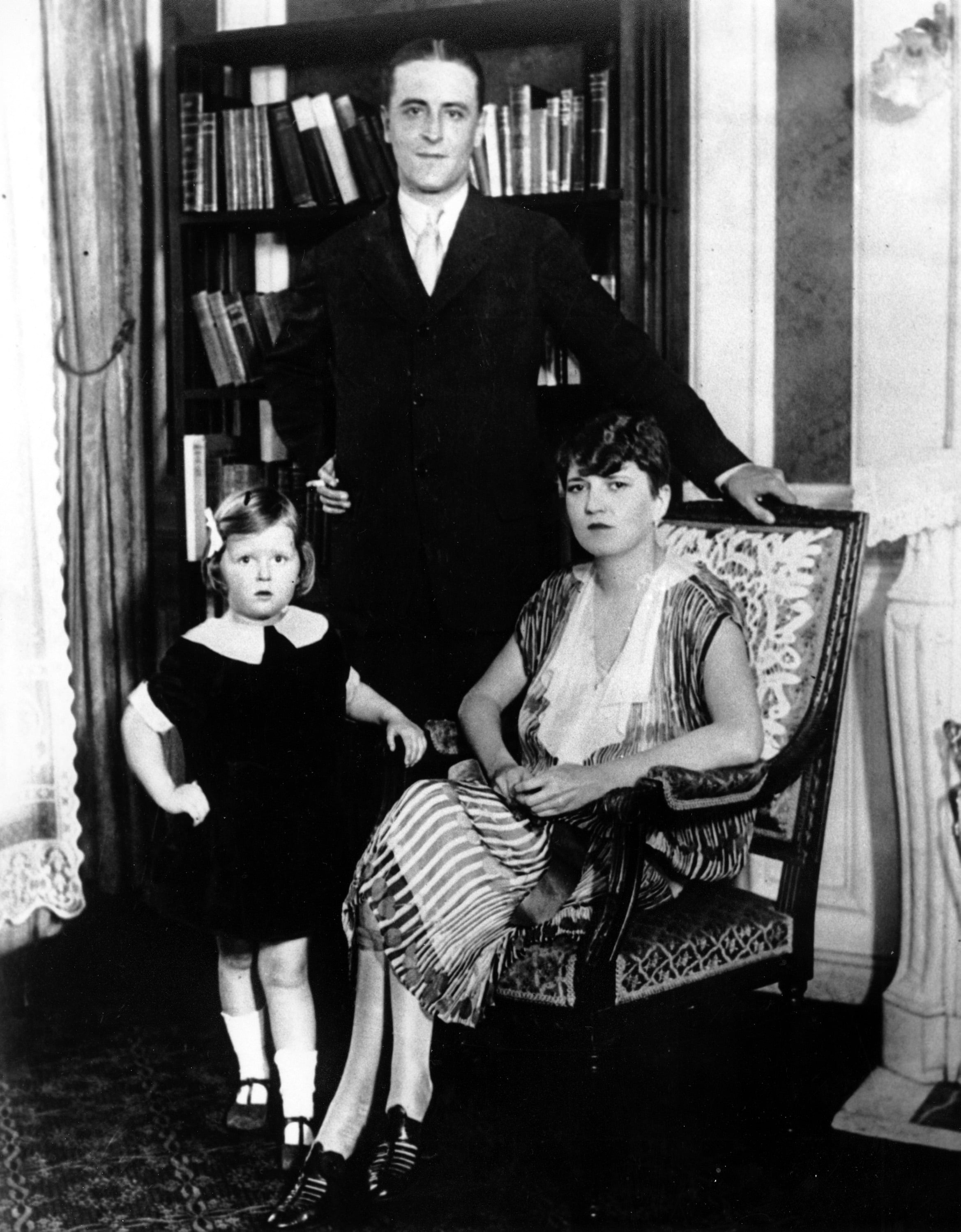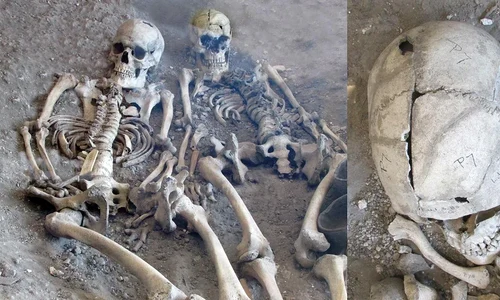
Scott Fitzgerald: The Last Great Romantic
A character of extreme contrasts, the author of the famous novel „The Great Gatsby” adventurously mixed genius with alcoholism, dreams with fears of defeat, opulence with the need to compromise for money.
When Scott Fitzgerald wrote the phrase:“So we beat on, boatsagainst the current, borne back ceaselessly into the past”, the world was in the year 1925. The Great War ravaged humanity, but the US lived in moving sands, in a combination of opulence, poverty and uncertainty which would plunge Washington in the Great Depression of the 1930s.
The ending phrase of “The Great Gatsby” – one of the greatest novels ever written – could be seen as a miniature characterization of the author-a kind of horizontal Western haiku. Yet, in 1925, Fitzgerald was looking at the past while the world was looking ahead trying to find solutions for economic normalization and the pride of winning over the Germans was still at its peak.
Fitzgerald seemed to be stuck hopelessly in a romantic past – made up of colours and shadows like a painting from another century. The above quote is actually the résumé of this mysterious character’s destiny:his life seemed to be a long string of failures, Sisyphean struggles and great disillusionments to which were added periodical strokes of genius– they demonstrated how shallow the literature of the time was.
From afar, Fitzgerald’s life seemed to be perfect for a Hollywood movie:financial problems, depression, illness, a very turbulent love affair and alcoholism. Proof is the fact that even though the literary critics very much approved of his work, Fitzgerald has never enjoyed the public success Hemingway or Salinger had. Even his greatest novel – “The Great Gatsby” – at the time of release was received with a certain coolness and reticence. When Fitzgerald died in 1940, he was almost forgotten. The New York Times obituary read that his most important novel proved how talented he was, yet he could have never fulfilled his destiny. However, today, the novel is considered a masterpiece and it is on the compulsory reading list at almost every high school in the world. In some ways, only time managed to do him justice.
His Childhood and War
Scott Fitzgerald was born on September 24th, 1896 in Saint Paul, Minnesota, USA in a Catholic middle class family of Irish descent. Even though he was named after one of his cousins – Francis Scott Key– the future writer was called usually only Scott. The other origin of his name was his sister Louise Scott– one of the two girls who died shortly before his birth.
Fitzgerald would write years later that “Three months before I was born, Mother lost the other two children. I think that is the time when I started to be a writer.”Because both of his parents were fervent Catholics, the future novelist spent the first ten years of his childhood between different Catholic schools in Buffalo, New York. Fitzgerald’s succint childhood portrait is one of a boy with a degree of intelligence very high above the average and a pronounced interest in literature.
When in 1908 Procter &Gamble dismissed his father, the whole family moved back to Minnesota where Fitzgerald went to the St Paul Academy. At the age of 13, his first writing – a detective short story-was published in a local newspaper. After his high school graduation, Fitzgerald chose New Jersey and Princeton University’s courses. He went there with a single goal in mind:to dedicate all his time to brush up his technique, in order to become a writer. However, his new self-taught programme interfered heavily with the courses. Therefore, in 1917 he was temporarily dismissed from the University.
Disappointed, Scott relinquished the courses and joined the American Army. Fitzgerald was afraid that he may die in the Great War and he would never manage to fulfil his literary dreams and therefore, in the week before his enrolment, wrote a novel called “The Romantic Egotist.”Even though the manuscript was rejected by a publishing house, the editors there encourage Fitzgerald in a letter to keep writing.
Meeting Zelda
After being named infantry lieutenant, Fitzgerald was sent to Camp Sheridan, a place very close to Montgomery, Alabama. Here, whilst partying with his colleagues one night, he met Zelda Sayre, the daughter of a judge from the Supreme Court of Alabama. Fitzgerald fell immediately for Zelda whom he called “Golden Girl.” Yet, the war ended in 1918 and Scott was never sent to the front.
The writer moved to New York, in order to desperately find a job to convince Zelda that he had the means by which to take care of her. Finally, he managed to be hired by a PR firm named Barron Collier. Fitzgerald asked his muse to marry him and she accepted. Yet, after only a few months, Fitzgerald’s financial issues blew up his and Zelda’s plans. Scott went back to his parents’ house where he started working as a mechanic while he revised “The Romantic Egotist” under the new name of “This Side of Paradise”. In the end, the novel was published, thus making Zelda and Scott able to pick up again their plans of marriage. The wedding took place on March 26th, 1920 in New York. Their first and only child – Frances Scott “Scottie”-was born after a year.
Schizophrenia and the Beginning of the Disaster
In the next tenyears, the Fitzgerald family spent most of the time in Paris-a place where a whole generation of American writers was living and writing. Here, Fitzgerald would spend the most important time of his career. In Paris, he also met Ernest Hemingway with whom he established a long friendship. Hemingway, however, did not think too much of Zelda. He believed she was “crazy” and accused her of influencing her husband to drink so as to divert his attention from writing great novels, in order to concentrate on easy short stories to sell to American magazines.

Fitzgerald did not, however, invent the method of making a living by selling stories. Every American writer of the era was into it, yet, the slow motion with which Fitzgerald wrote his great novels compared to the stories he sent almost monthly to America made Hemingway accuse him of “prostitution”. Although Scott announced he would not be writing “easy” short stories, but real literary works, soon he started doing just this by using the commercial secret of the époque. This way, he actually confirmed his friend’s fears.
In this insecure atmosphere, Fitzgerald would send in 1925 the manuscript of what is today known as “The Great Gatsby”. The novel received moderate appraisal and a certain reticence which underscored the writer’s depression and uncertainties. What is more, at the time of his death, few people in the US would mention his name. Yet, his posthumous luck came during the WW2 when the Armed Forces publishing house distributed 150.000 copies of the book to the soldiers on the front. Thus, this opened Fitzgerald to a new generation of readers and posthumous adulation.
Zelda’s Illness
Even though Fitzgerald’s dream was to become a great novelist, his short stories could alone ensure the financial means for his opulent Paris lifestyle. Yet, his literary agent Harold Ober decided not to borrow him money anymore, situation which marked the end of the friendship between them. Towards the end of the 1920s, Fitzgerald started working on a new novel, however, he advanced slowly, because of the stories he had to write simultaneously, in order to make a living.
The fatal blow came in 1930 when Zelda was diagnosed with schizophrenia. From that moment on until the end of her life, the emotional health of his wife would be very poor. After Zelda’s 1932 internment, Scott retired to Baltimore, in order to finish his new novel based on a love story between a psychiatrist and one of his patients. The relationship between his two characters is reminiscent in many ways of the one between Scott and Zelda:alcoholism, unfulfilled dreams and emotional blackmail. The book entitled “Tender is the Night”was published in 1934. However, the literary critics destroyed the novel by calling it a farce, since they believed it was not a worthy follow-up for “The Great Gatsby”. As of today, The Great Gatsby and Tender is the Night are considered masterpieces.
Alcoholism and Alienation
Fitzgerald moved to Hollywood in 1927 where he would gain the biggest annual salary of his life – 29.757 $. Besides short stories, Scott started writing film scripts which he considered “degrading”, yet he had to do it in order to make a living. At the same time, he began working on his last novel – “The Love of the Last Tycoon”.
At that particular moment, his health and relationship with Zelda were in complete chaos. Fitzgerald owned up to the fact that he became an alcoholic and Zelda was still spending time in different psychiatric hospitals. Yet, Scott began a new relationship with the journalist Sheilah Graham. In the year 1939 – 1940, he managed to write 17 short stories later known as “The Pat Hobby Stories”where he became a character who ridiculed his own life in Hollywood. The literary critique of the era very much welcomed the short stories published by The Esquire magazine.
“I have an idea that Gatsby himself didn’t believe it would come, and perhaps he no longer cared. If that was true he must have felt that he had lost the old warm world, paid a high price for living too long with a single dream”. Scott Fitzgerald, “The Great Gatsby”.
“When I first read it, when I became acquainted with Gatsby, it seemed to me to be the first step that the American fiction has taken since Henry James.”T.S. Elliot
The Fall. Death
At the end of the 1930s, Fitzgerald’s alcoholism turned pathological. The writer invented diseases such as tuberculosis, in order to justify his Bacchic escapades. At the end of the decade, Scott suffered two heart attacks. His doctor advised him to give up drinking and to pause his writing. He moved closer to the Hollywood apartment of his new girlfriend, Sheilah Graham. Yet, in the night of December 20th, 1940, after he attended the premiere of the movie “This Thing Called Love”, Fitzgerald suddenly blacked out and he was unable to move from his seat at the movies. Scott, annoyed at the stares of the public, told his girlfriend that“Everybody thinks I am drunk, isn’t it?”
The next day, his girlfriend saw him suddenly falling down when trying to put on his coat, not before he had eaten a chocolate bar and written something in a notebook. The doctors’ diagnosis was heart attack. Fitzgerald was buried in Rockyville, Maryland. No more than twenty people took part in the burial ceremony and among them were his 19-year-old daughter and his ex-editor. Zelda died in 1948 in a fire at the “Highland Mental Hospital.” Scott’s last manuscript entitled “The Love of the Last Tycoon” was published in 1941 and immediately compared to the “Great Gatsby.”
“The Great Gatsby” took second place in the top of the 100 best books of 20thcentury compiled by the “Modern Library.”















